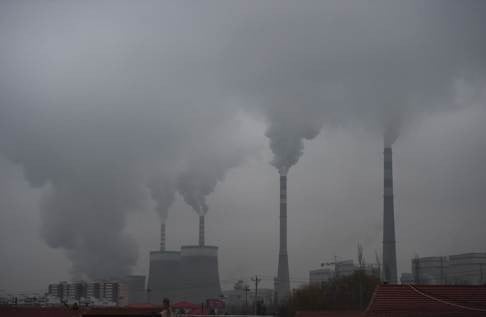China pollution pledge: Beijing to cut 60pc of power sector emissions by 2020
Richer developed nations not doing enough to make deep cuts in greenhouse emissions and help developing nations with new finance to tackle global warming, says Beijing

China will cut emissions of major pollutants in the power sector by 60 per cent by 2020, the cabinet said Wednesday after world leaders met in Paris to address climate change.
Beijing will also reduce annual carbon dioxide emissions from coal-fired power generation by 180 million tonnes by 2020, said a statement on the official government website.
It did not give comparative figures , but said the cuts would be made through efficiency gains.
In Paris, Christiana Figueres, head of the UN Climate Change Secretariat, said she had not seen the announcement, but linked it to expectations that China's coal use would peak by the end of the decade.
“I can only assume they are talking about the same thing,” she said.
Su Wei, China's delegate at the Paris talks, “noted with concern” what he called a lack of commitment by the rich to make deep cuts in greenhouse gas emissions and help developing nations with new finance to tackle global warming.
Researchers at Chinese government-backed think-tanks said last month that coal consumption by power stations in China would probably peak by 2020.
An EU official, speaking on condition of anonymity, said that Wednesday's announcement seemed to relate more to air pollutants than greenhouse gas emissions.
The efficiency target is in line with earlier emissions standards announced in 2014, but it tightens things up for coal-fired plants nationwide, without regional differences
China's capital, Beijing, suffered choking pollution this week, triggering an “orange” alert, the second-highest level, closing highways, halting or suspending construction and prompting a warning to residents to stay indoors.
The smog was caused by “unfavourable” weather, the Ministry of Environmental Protection said. Emissions in northern China soar over winter as urban heating systems are switched on and low wind speeds mean that polluted air does not get dispersed.
The hazardous air, which cleared on Wednesday, underscores the challenge facing the government as it battles pollution caused by the coal-burning power industry and raises questions about its ability to clean up its economy.

Beijing has pledged to reduce the share of coal in total energy consumption to 60 per cent by the end of the decade. It has banned the use of low-grade coals.
Premier Li Keqiang has said China would set an efficiency “bottom line” of 310 grams of coal per kilowatt-hour for plants across the country, the government website said.
The average for the first 10 months of 2015 was 318 grams, according to official data.
“The efficiency target is in line with earlier emissions standards announced in 2014, but it tightens things up for coal-fired plants nationwide, without regional differences,” said Yuan Jiahai, a researcher with the North China Electric Power University.
The cabinet also said that it would provide more financial support, including preferential loans, to help firms renovate.
Beijing already provides subsidies for firms that have installed the mandatory equipment.
China's coal-fired power sector is notoriously inefficient.
Utilisation rates have fallen nearly 8 per cent this year to reach a record low, but surplus capacity could still be as high as 130 GW (gigawatt), or 14 per cent of the total, industry estimates show.
Also, local governments continue to approve new capacity even as the country shuts outdated ones. Around 200 GW of capacity was given the go-ahead in the first half of 2015, while only 4.9 GW of small and ageing plants were shut in 2014.